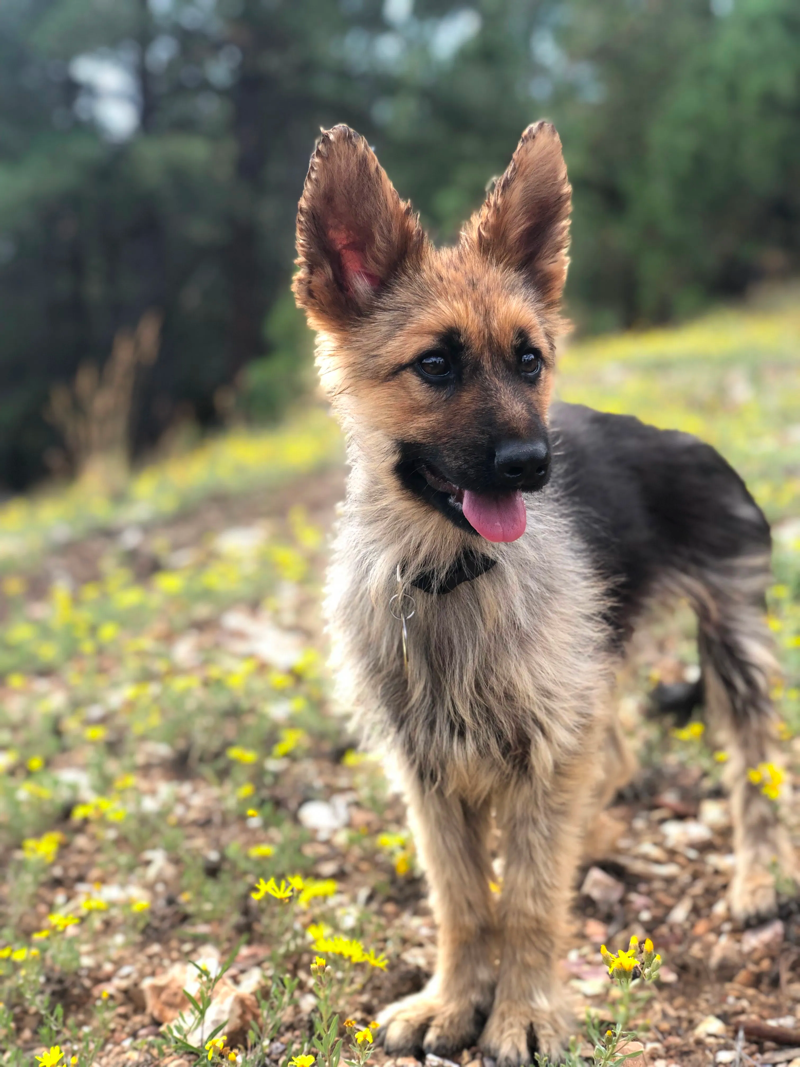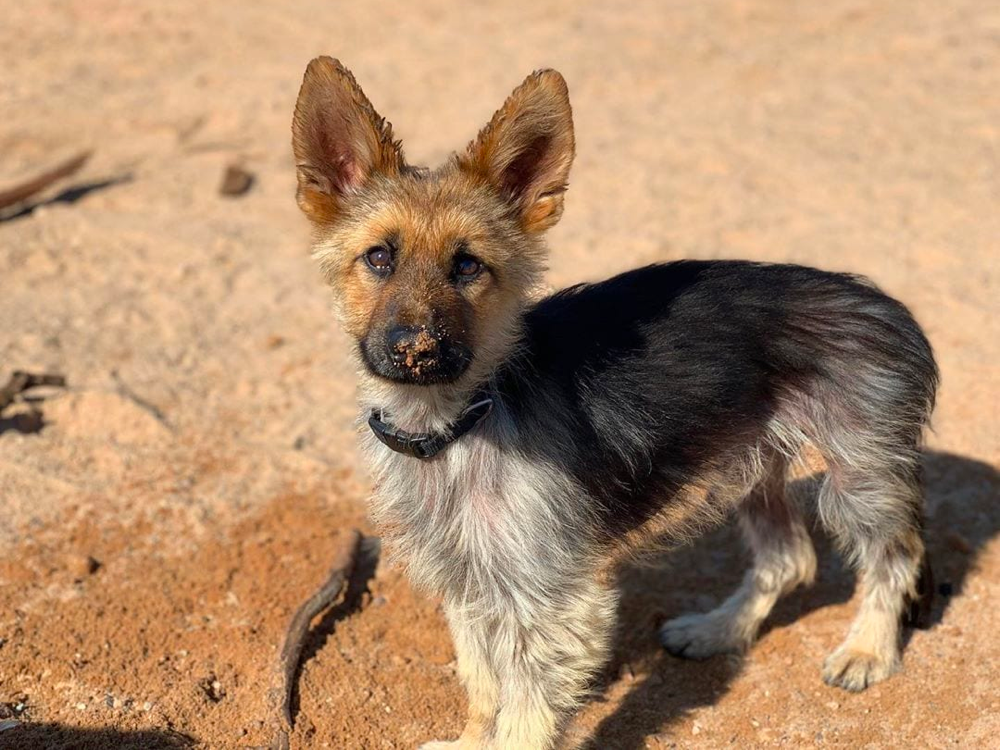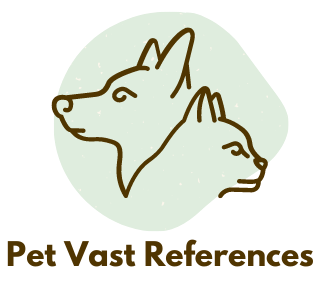Contents
Dwarfism in German Shepherd Dogs is defined as a state in which the development of the dog is rather slow or delayed. In other words, dwarfism in German Shepherd Dogs and any other dog breeds is a condition of abnormally small body stature, which is characterized by a change in proportions of the body parts. However in German Shepherd Dogs and other dog breeds, there are very little-known cases of dwarfism that yield a close to what the perfectly proportioned structure of a dog is, but a significantly downsized version. Although all types of dwarfism originate from mal functional glands, an acceptable word for this kind of condition should be proportional or pituitary dwarfism in German Shepherds.

As a matter of fact, most people – especially German Shepherd Dog owners, do not know about this condition, called Pituitary Dwarfism in German Shepherds, although this is not very rare, yet not too commonly found either. The well-researched breeding program is highly recommended hereby to get rid of Pituitary Dwarfism in GSD. Too much line breeding programmed by some breeders has produced awesome and highly acclaimed specimens, but on the other level, the incidence of Pituitary Dwarfism in GSD had been shooting up in many parts of the world.
There are various kinds of dwarfism. Pituitary Dwarfism is in allusion to the pituitary gland in the body. The pituitary glands in German Shepherd Dogs regulate certain hormones in the animal’s body. The condition, Pituitary dwarfism in GSD is reduced growth triggered due to hormonal problems in the dogs, which means it is mainly caused due to malfunctioning of the pituitary gland of the dog.
Brief Insight of Pituitary Dwarfism
In German shepherd dogs, dwarfism is a rare occurrence, although not too rare. Responsible breeders around the world have pulled down the chances of occurances of Pituitary Dwarfism in German Shepherds, through more scientific breeding programs and selective breeding strategies. The pituitary dwarfism found in the German shepherds is possibly a polygenic disarray of threshold nature, most of the researchers though believe it as an outcome of a simple autosomal recessive characteristic. In most species, the recessive gene may remain hidden for many generations. When two identical recessive genes are paired, the attribute of dwarfism showcases itself in the individual dog. Genes always function in pairs, and also only then when both the pair of genes is of the recessive alleles. The existence of one recessive gene in the individual does not affect its characteristics, the dominant partner dictates the terms or dominant phenotype characteristic of the individual. External disorders are not the only abnormality found in the pituitary dwarfs. Blood chemistry test of these specimens shows that some hormones are completely absent or may be present at a very low level than the normal requirement. The thyroid is governed by the pituitary. The thyroid gland controls the maturity process, metabolism, development, behavior, and physical and mental activities. This in turn can also be affected due to malfunctioning of the pituitary.
Pituitary Dwarfism in German Shepherds

One problem we can anticipate in an attempt to breed German Shepherds with Pituitary Dwarfism, besides possessing a low fertility level, is whelping. Pituitary dwarfs in the initial stage of their life start off at normal size, which for German Shepherds is one pound. The size may vary by five to four ounces depending on the size of the litter. If a dwarf bitch is impregnated, artificially, of course, by a normal-sized GSD male, some of the puppies could be of normal size and the bitch may not be able to pass them or possibly even carry them without damage to them or herself. If a normal-sized carrier female German Shepherd is bred to a dwarf GSD male, it shouldn’t cause more of a problem than when two dwarf dogs with recessives genes are combined through matting. We have not yet come across any breeder, who has carried out such a mating.
It is quite usual for a GSD bitch to give birth to ten pounds of puppies and to carry the extra weight of fluid and placental tissues. For female German Shepherds with Pituitary Dwarfism, to carry this would be certainly impossible. The size and weight of pituitary dwarfs vary to a great extent. At birth, sometimes, the German Shepherd Dog and any other breed come out seemingly normal, with normal size and body weight, beautiful temperaments, active… apparently healthy as a whole. with maturity at about a few weeks or months, the symptoms of Pituitary Dwarfism become prominent. The condition becomes prominent when the growth plates close and the skeletal system fails to grow proportionately, which during further maturity stops growing absolutely. The body weight ceases to increase too. The little GSD would weigh far lower than a normal litter mate at maturity. Interestingly the experimentation with Pituitary Dwarfism in German Shepherds has shown that the eyes of dwarf dogs are highly sensitive to bright light. I have been studying the notes of Mr. Fred Lanting, who has been working with German Shepherds and have developed a good knowledge base on Pituitary Dwarfism in German Shepherd Dogs. Mr. Fred Lanting said in this regard, “there was something that had not appeared in the scientific literature but which I noticed in this litter, as well as in photographs of other litters: pituitary dwarfs seem to squint in bright sunlight more than do their normal siblings. Another facial characteristic of miniature Shepherds is a fox-like appearance, arising out of wide-set ears. I believe this to be a result of disrupted proportions of the skull vs. base of the pinna (ear shell), which to some extent is seen in Welsh Corgis also. A somewhat long and pointed muzzle is due partly to a shortening of the skull and, in some individuals, a slight overbite.”
The important thing every owner and breeder should know is that dwarfs are just the peak of an iceberg. The huge majority of hypopituitarism in German shepherd dogs (pituitary dwarfism in GSD) does not manifest itself as dwarfs but as stillborn and fading puppies. I believe GSD which produces dwarfs should have their breed examination written apart and to get rid of this they should be removed from the breeding programs honestly by the registration authorities by not registering their progeny. The instance for this kind of registration refusal already exists for “Hemophilia A”, and I would be glad to see this is also maintained for pituitary dwarfism in GSD and all other dog breeds.
Chance or Risk of Pituitary Dwarfism in GSD
An analysis of the Australian data has shown the expected chance of the birth of dwarf dogs, and that is 2 dwarfs out of 1000 puppies (0.2% chance), if “any male dog” is bred to “any female dog”, at random, without even sparing though over the science of breeding dogs. Moreover, it has also been reported that the recurrent risk for a good male or female bred to any dam or sire of a dwarf dog is 7 per 1000 (0.7% chance). The analysis of the said Australian data also shows that the recurrent risk for a parent of a dwarf bred to a half-sibling of a dwarf is 272 per 1000 (27.2% chance). The risk of a dwarf being bred to a parent of a dwarf is 235 per 1000 (23.5% chance).

 White German Shepherd: History, Temperament, Health and Care
White German Shepherd: History, Temperament, Health and Care